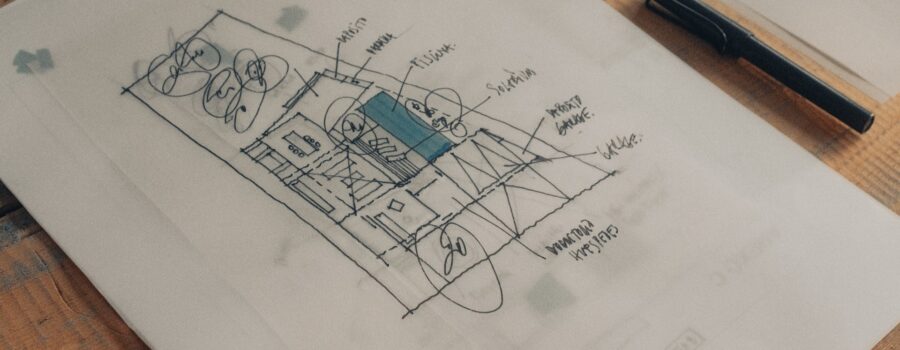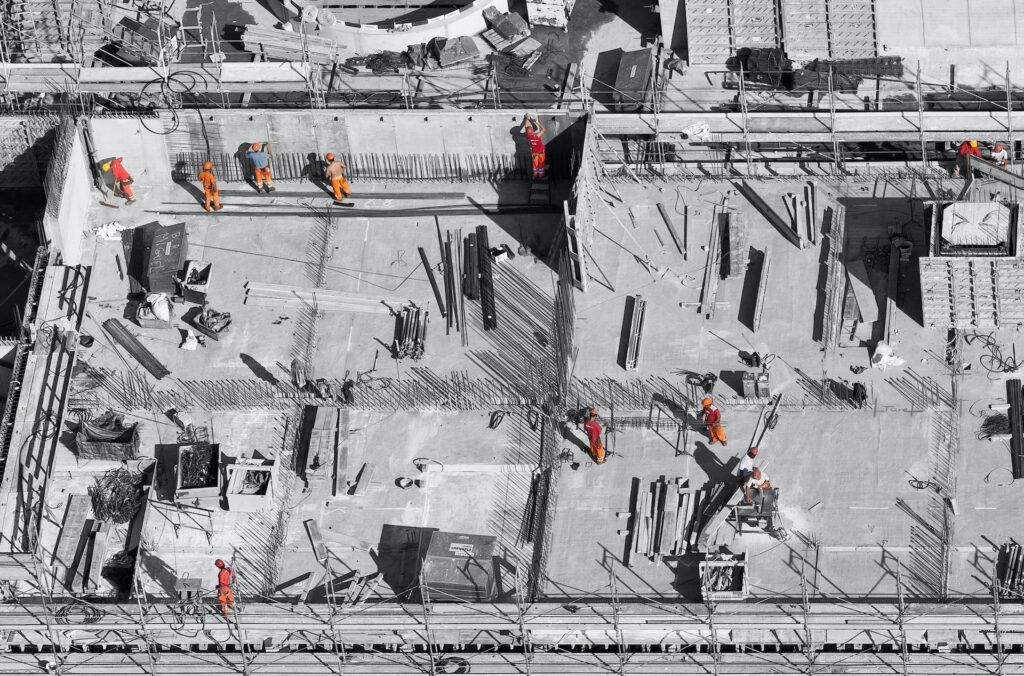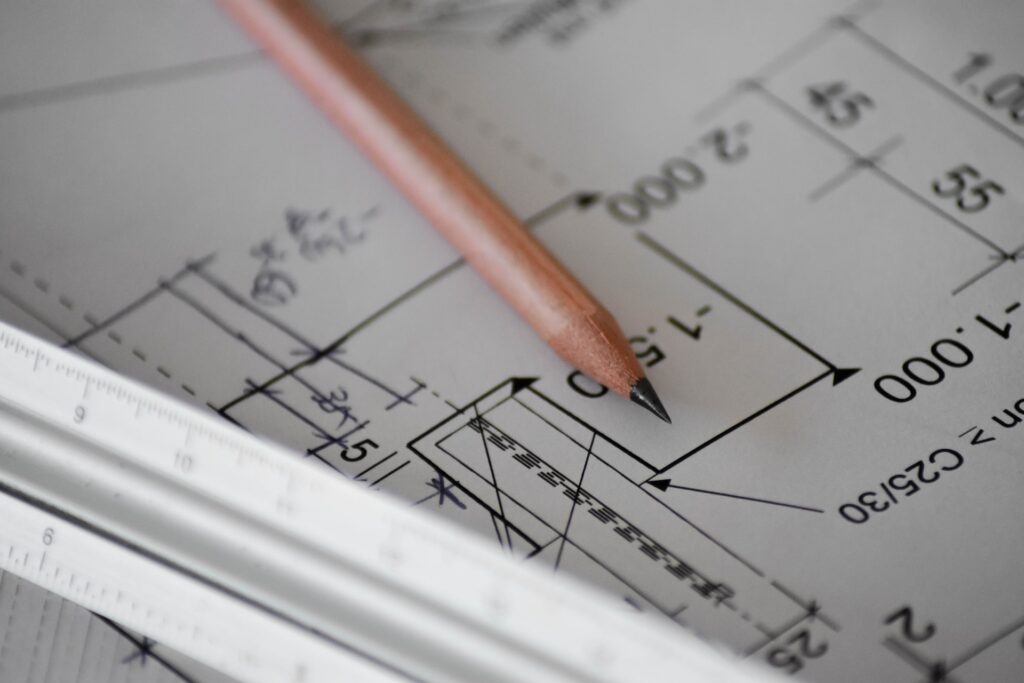
Plot Plans vs. Site Plans: What’s the Difference?
When you’re starting development on a construction project, there are several types of plans that might need to be created before most of the work is done. Two of the most common plans are plot plans and site plans.
Plot plans are engineering schematics that display the utility blocks, process blocks, roads, and building blocks for a potential project. This plan is available as a diagram that shows all of the structures on a plot of land. It’s a scaled drawing that indicates the size, shape, and location of the lot as well as any improvements that have occurred. Most plot plans include the location of utility lines, trees, and fences.
Although site plans are sometimes referred to as plot plans, they come in numerous styles. These plans show a larger view of the piece of land or construction site and looks more like a map. When drawn correctly, a site plan will show where the plot of land is located in relation to nearby geographical features, which include roads, seashores, and rivers. The following details the primary differences between plot plans and site plans.
What is a Plot Plan?
A plot plan is a type of scaled drawing that shows everything on the owner’s property, which includes the size, shape, and location of the building and any improvements that might have been made. This drawing will also highlight utility lines, trees, and other lot features. Any roads that surround or lead into the property are required as well.
The purpose of a plot plan is to make sure that all buildings constructed on the land adhere to local land use and development regulations. Creating a plot plan for a residential home gives you the ability to make improvements to the existing building or construct a new building.
The plot plan for your property will also allow you to keep track of property boundaries, any inground pools, and any homes that surround your property. While plot plans are drawn to scale, they aren’t drawn to specific dimensions. These plans are used as basic diagrams that indicate what is on your property in relation to existing structures and land features.
Plot plans are commonly used during real estate transactions to show how the piece of land is being used and what structures can be built on the land. When used in this scenario, the plan is typically called a parcel map. Plot plans can be used to build everything from fences to homes. You can also use it to design a spacious garden.
What is a Site Plan?
Site plans are scaled drawings that display the layout for an existing or proposed building or development. It will also highlight where the building will be located on the property. Additional details placed on a site plan include the shape and size of the building, any sidewalks and streets on the property, and the location of driveways or other parking areas.
Site plans are regularly sought by city planners, engineers, developers, and architects to design and formally approve new buildings. Homeowners and builders can also use site plans to plan a remodeling project.
The main component in a site plan is making sure that the relationship between the things that currently exist on the property and the structures you want to build is displayed. There are several techniques you can employ to generate a site plan. Keep in mind that each building authority has its own requirements for what a site plan should look like.
For instance, you may be required to hire a land surveyor before you can create a site plan. Other building authorities make this process simpler by allowing you to draw the plan on graph paper. Obtain clarification from your local permitting agency before you draw this plan.
In order to make additions or improvements to an existing property, site plans must be used to verify that all state and local construction regulations are being followed. Governments typically keep these plans for their historical records.

What is the Difference Between the Two?
Even though plot plans and site plans differ from one another, these differences are minor. Plot plans typically refer to the construction of a single structure on a specific plot of land. For instance, you can use a plot plan when you’re getting ready to develop a single-family home.
Site plans can be used for much larger projects. As an example, a site plan for a commercial mall may incorporate numerous structures on one or several plots of land. In the event that a site plan contains just one structure on one plot of land, it will become a plot plan.

Guidelines for a Site Plan
The main guidelines for a site plan include:
- Your legal description – This description should include such information as your tax laws, section, township, and range.
- Site plan scale – The scale of your site plan needs to be precise.
- Name and address – Your full name and address are the most important pieces of information to include in a site plan.
- Property lines – This plan should include all of your property lines.
- North cardinal direction – This direction should be displayed on the site plan to highlight how your property is currently orientated.
- Current and proposed structures – All current and proposed structures on the property should be incorporated into the site design.
- Additional details – Some of the additional details that you should include in this plan extend to nearby streets and your driveway’s position.
Uses of a Site Plan
Plot plans show different levels of detail based on the application they’re being used for. The primary uses of a site plan extend to:
- Marketing materials for real estate transactions that involve everything from single-family homes to rental properties
- Informational documents that detail everything that’s included on a piece of land for a campus, park, or apartment complex
- References for construction projects
- You’d like a road map when completing yard work
- You want to sketch a new roofline
- You’re having encroachment problems with one of your neighbors
- You’re considering redoing your entire landscape
- You’re thinking about applying for a new building permit to build an outdoor structure
- You want to remodel or remove a swimming pool
- You’re building a commercial property and need to obtain a conditional use permit
- You need to obtain a demolition permit to demolish a structure on your property
- You’re thinking of applying for a building permit in a city that has tree protection requirements
Guidelines for a Plot Plan
The main guidelines for a plot plan include:
- When using a standard measuring wheel, you should perform measurements of existing structures as well as the entire property.
- Complete the measuring process by positioning a measuring wheel along a property corner and walking behind the wheel as you move it around property lines.
- Write down the exact measurements for the length of all sides of your property.
- This same process should be repeated for every structure on your property.
- Draw an outline of your lot to scale on a piece of graph paper once all measurements have been gathered.
- Place a scaling rule in one of the corners of your graph paper to show how feet are converted into inches. For instance, an inch can equal ten feet.
- When using the scale rule, you can draw existing structures and buildings on your plan. If you’re making additions or adjustments to an existing building, the scale rule allows you to draw these changes.
- Place a compass or directional arrow on the document to display how your property is oriented.
- Write down your phone number, name, and address on the plot plan.
- Include the square footage for any buildings you expect to construct as well as the entire property.
- Implement impervious coverage, green space percentages, bulk percentages, and building coverage on the plan.
Uses of a Plot Plan
The primary uses of a plot plan include:
- You want to build a structure on your property
- You need to obtain zoning approval
- You need a permit
- You live in a remote location and want to know your property lines
- You work as a landscaper or contractor and are in the planning phase of a new project
Site plans and plot plans are two types of architectural plans that can help you during development and may be needed when submitting an application for a building permit. Before you create one or both of these plans, consider calling your local building authority to ensure you’re making the right decision.

Jason Somers, President & Founder of Crest Real Estate
With over 15 years of professional experience in the Los Angeles luxury real estate market, Jason Somers has the background, judgement and track record to provide an unparalleled level of real estate services. His widespread knowledge helps clients identify and acquire income producing properties and value-ad development opportunities.
Learn more about Jason Somers or contact us.



